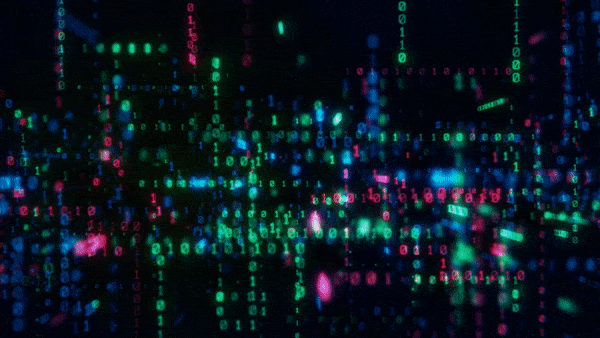
READ MORE: The End of Infinite Data Storage Can Set You Free (Wired)
That message from Microsoft or Google telling you that you’ve exceeded the limit of your email storage. You know the one. An increasing number of people are getting it and are consequently involved in a mad scramble to delete as much of the account as they can in order to receive and send more and more emails or photos.
You delete entire years’ worth of “sent” items; repeatedly empty the wastebin. Eventually it makes a bit of a dent in the GBs of data you’ve stored without thinking twice.
And, of course, Google and Microsoft will then invite you to ease your worries by buying into their upgraded cloud bucket.
Drew Austin has experienced this too, and uses it as a jumping off point in an article in Wired that discusses the way our personal information and collective archive has been dismembered and devalued by the internet.
“By fostering the sense that our wells of personal information were bottomless, Google turned us all into information hoarders.”
As it turns out, the cloud is not an infinite resource.
Google has gradually upped the free storage space on Gmail since its launch in 2004 from a gigabyte to 10 gigs in 2012, and 15 gigs a year later. Then, in 2020, it introduced fees. Not a lot — I pay $1.99 a month, but, says Austin, “If Google eventually charges more for storage, we will almost certainly keep paying without thinking twice. Most likely, we won’t have much of a choice.”
“Austin urges us to develop better systems for organizing, prioritizing, and even discarding the information that we accumulate — not because we’re concerned about running out of space, but because our hoarding behavior diminishes the utility of the information that is truly valuable.”
Chucking up photos and video and email and documents into the cloud is not mere habit. For Austin, they are fundamental expressions of our evolving relationship with information.
“Google’s first and most revolutionary product, search, enables us to be casual, even messy, with our data. We are only able to thoughtlessly accumulate such massive volumes of information in our personal accounts because we have search capabilities powerful enough to help us navigate that data, the same way we navigate the public internet.”
Largely because of Google, searching has replaced sorting in personal information management; instead of organizing our data using a legible system or knowing where things are, it can all go into one seemingly jumbled pile.
“It is not surprising, then, that to a younger generation raised on search, the concept of file folders and directories, essential to previous generations’ understanding of computers, is gibberish.”
Despite Google’s stated mission “to organize the world’s information and make it universally accessible and useful,” the company has also contributed to the internet’s privatization.
YOUR ROADMAP TO Web3:
Does web3 offer the promise of a truly decentralized internet, or is it just another way for Big Tech to maintain its stranglehold on our personal data? Hand-picked from the NAB Amplify archives, here are the expert insights you need to understand web3’s potential and stay ahead of the curve on the information superhighway:
- Magnificent Obsession: Why Are We in Love With Web3?
- Web3 and the Battle For the Soul of the Internet
- Web 2.5 Is Just… Awkward
- Avatar to Web3: An A-Z Compendium of the Metaverse
- Brave New World? Sure, Just Click Here
One example: The rise of email newsletters on platforms like Substack has moved blogging to private inboxes, meaning that thousands of individuals frequently store their own duplicative copy of a post that would have previously been hosted on a just single server. Meanwhile, many blogs that were active 10 years ago are no longer available on the internet at all.
Some sort of spring clean is needed at an individual level. Austin urges us to develop better systems for organizing, prioritizing, and even discarding the information that we accumulate — not because we’re concerned about running out of space, but because our hoarding behavior diminishes the utility of the information that is truly valuable.
He claims such efforts are needed to combat the deterioration of the infrastructure for publicly available knowledge. As with any public good, the solution to this problem should not be a multitude of private data silos, only searchable by their individual owners, but an archive that is organized coherently so that anyone can reliably find what they need.
That used to be called a library. But it’s going to be almost impossible outside of a Quantum computer-powered AI to preserve all of our information in searchable form.
On the plus side, we may not actually run out of digital storage capacity. Despite the world’s rapidly growing production of data advances in storage efficiency are thought likely to keep pace.
There are innovations aimed at saving our collective online consciousness. The Internet Archive’s Wayback Machine (which describes itself as a digital library) scrapes the web continuously, saving as much of it as possible as frequently as possible.
THE ABCs of NFTs:
Are NFTs just more hype, or are they actually the building blocks of the creator economy? Understanding blockchain technology can seem like a lot, but NAB Amplify has the expert knowledge and insights you need to remain at the top of the intersection of art and technology:
- NAB Amplify’s NFT Primer
- What’s the Real Future of the NFT Crypto Art Market?
- Weird Science: The Connection Between NFTs and… Human Nature?
- What Is the Value of an NFT?
- NFTs: Content Strategy or Digital Craze?
Perma, which is owned by the Harvard Library Innovation Lab, minimizes what Austin calls “link rot” by converting hyperlinks in scholarly documents into “reliable, unbreakable link(s) to an unalterable record of any page you’ve cited.”
“Tools like Perma,” he says, “enable libraries to fulfil their potential as archives of digital information and organizing systems for knowledge, by reducing the ephemerality of material that is worth preserving.”
The most ambitious and holistic efforts to make digital information more durable and publicly accessible, arguably, are Web3 and the blockchain technology that underpins it.
Blockchains are inherently immutable and distributed publicly among peer-to-peer networks, seeming to directly address the shortcomings of the privatized, individualized internet.
“Regardless of information’s ability to keep growing, it will be necessary to restore collective approaches to organizing that information and to continue rebuilding the infrastructure for public knowledge that has atrophied alongside the rise of private archiving,” Austin contends.
Instead of personally owning most of the information we need — on our own devices and in the cloud — we can inhabit a world where more of that information exists in the public sphere and we simply know where to find it.




